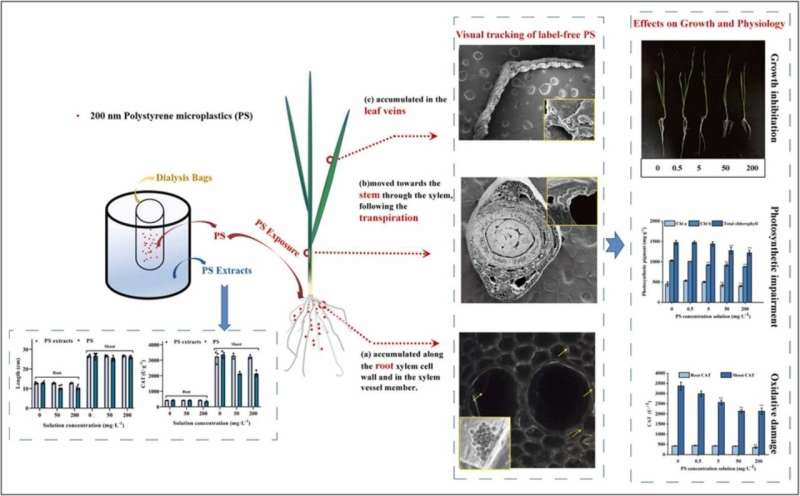This article has been reviewed according to Science X's editorial process and policies. Editors have highlighted the following attributes while ensuring the content's credibility:
fact-checked
peer-reviewed publication
trusted source
proofread
Researchers propose new method to identify label-free microplastics in crop plants

A research team led by Prof. Fan Qiaohui from the Northwest Institute of Eco-Environment and Resources (NIEER) of the Chinese Academy of Sciences (CAS), in collaboration with Prof. Luo Yongming from the Institute of Soil Science of CAS, has systematically investigated label-free microplastics identification in crop plants and stress response to microplastics in wheat seedlings. The study was published in Journal of Hazardous Materials on May 22.
Most previous studies on the detection of microplastics in plants were based on fluorescent labeling. However, this method has certain disadvantages, including false-positive fluorescent signals of microplastics due to interference from background fluorescence of plant tissues and high limits of detection.
Therefore, new detecting techniques of microplastics in plants are urgently needed to achieve accurate detection and quantification.
In this study, the researchers found that hyperspectral-enhanced dark field microscopy could be applied precisely to the detection of label-free microplastics based on the spectral information of the polymer substance, as this method completely avoids the interference caused by the shed of microplastics markers.
Hyperspectral imaging technology and scanning electron microscope provided solid evidence that label-free polystyrene microplastics could migrate from hydroponic solution to wheat roots, and mostly aggregated in the inner wall of the xylem element. These particles were then transferred to the shoots of wheat seedlings.
The results showed that high concentrations of microplastics could induce photosynthetic impairment and oxidative damage in wheat seedlings, while the microplastic extracts had no significant effects on the growth and physiology of wheat seedlings.
"Our findings shed light on the modes of microplastics interaction with plants and have implications for crops growing in fields microplastics contaminated," said Prof. Fan.
More information: Ruijie Li et al, Visual tracking of label-free microplastics in wheat seedlings and their effects on crop growth and physiology, Journal of Hazardous Materials (2023). DOI: 10.1016/j.jhazmat.2023.131675
Journal information: Journal of Hazardous Materials
Provided by Chinese Academy of Sciences



















